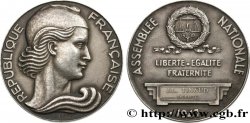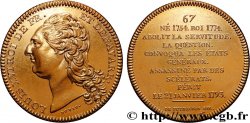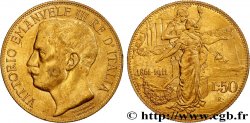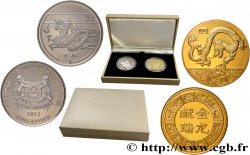Usted debe firmar y ser un comprador aprobado para pujar, Inicia sesión para pujar. Las cuentas están sujetas a la aprobación y el proceso de aprobación se alcanzan dentro de las 48 horas. No espere hasta el día en una venta se cierra el registro.Al hacer una oferta en este artículo usted está firmando un contrato jurídicamente vinculante para comprar este artículo y haga clic en «oferta» constituye una aceptación de los términos de uso de live auctions de cgb.fr.
La subasta debe ser colocado en euros enteros cantidades venta only.The se cerrará en el momento en la descripción del artículo, no se ejecutarán las ofertas recibidas en el sitio después de la hora de cierre. Veces Transmition pueden variar y las ofertas pueden ser rechazadas si espera a los últimos segundos. Para más información envie el FAQ Live auction.
Las ofertas ganadoras estarán sometidas a un 18% IVA incluido por gastos de participación a la venta.
Las ofertas ganadoras estarán sometidas a un 18% IVA incluido por gastos de participación a la venta.
| Valoración : | 100 € |
| Precio : | 60 € |
| Oferta más alta : | 60 € |
| Fecha de fin de la venta : | 24 octubre 2023 18:56:18 |
| participantes : | 2 participantes |
Tipo : Médaille, Académie de médecine
Fecha: 1951
Metal: plata
Milésimas de pureza : 950 ‰
Diámetro: 41 mm
Eje de acuñación: 12 h.
Acuñador PATEY Henri-Auguste-Jules (1855-1930)
Peso: 30,45 g.
Canto: lisse + corne 1ARGENT
Cuño: corne 1ARGENT
Comentarios sobre el estado de conservación:
Patine grise hétérogène. Quelques marques d’usure. Présence de quelques coups sur les bords de la tranche
Anverso
Titulatura del anverso: ACADÉMIE DE MÉDECINE.
Descripción del anverso: Trois femmes autour d’une table ; à l’exergue portrait d’Esculape dans un médaillon posé sur un tronc avec deux serpents enroulés. Signé : A. PATEY.
Reverso
Titulatura del reverso: ACADEMIE / NATIONALE / DE / MEDECINE / - / M. TH. ALAJOUANINE / 1951.
Descripción del reverso: Légende en 6 lignes.
Comentario
Dans la mythologie grecque, Asclépios (en latin Aesculapius) est dans l'épopée homérique un héros thessalien puis, à l'époque classique, le dieu gréco-romain de la médecine. Fils d'Apollon, il meurt foudroyé par Zeus pour avoir ressuscité les morts, avant d'être placé dans le ciel sous la forme de la constellation du Serpentaire.
Il correspond à l'Esculape romain, dont le nom est une traduction en alphabet latin du dieu grec, et à l'Imhotep égyptien. Son attribut principal est le bâton d'Asclépios, autour duquel s'enroule un serpent, aujourd'hui symbole de la médecine.
Son principal lieu de culte est situé à Épidaure, où il guérit les pèlerins par incubation. Il est invoqué dans le serment d'Hippocrate aux côtés de son père Apollon et de ses filles principales Hygie et Panacée. Il est l'ancêtre mythique des Asclépiades, une dynastie de médecins exerçant à Cos et Cnide, dont Hippocrate est le plus illustre membre.
In Greek mythology, Asclepius (in Latin Aesculapius) is a Thessalian hero in the Homeric epic and, in the classical period, the Greco-Roman god of medicine. Son of Apollo, he was struck down by Zeus for having resurrected the dead, before being placed in the sky in the form of the constellation Serpentarius. He corresponds to the Roman Aesculapius, whose name is a Latin translation of the Greek god, and to the Egyptian Imhotep. His main attribute is the staff of Asclepius, around which a serpent is coiled, today a symbol of medicine. His main place of worship is located at Epidaurus, where he heals pilgrims by incubation. He is invoked in the Hippocratic Oath alongside his father Apollo and his main daughters Hygieia and Panacea. He is the mythical ancestor of the Asclepiades, a dynasty of physicians practicing in Cos and Cnidus, of which Hippocrates is the most illustrious member
Il correspond à l'Esculape romain, dont le nom est une traduction en alphabet latin du dieu grec, et à l'Imhotep égyptien. Son attribut principal est le bâton d'Asclépios, autour duquel s'enroule un serpent, aujourd'hui symbole de la médecine.
Son principal lieu de culte est situé à Épidaure, où il guérit les pèlerins par incubation. Il est invoqué dans le serment d'Hippocrate aux côtés de son père Apollon et de ses filles principales Hygie et Panacée. Il est l'ancêtre mythique des Asclépiades, une dynastie de médecins exerçant à Cos et Cnide, dont Hippocrate est le plus illustre membre.
In Greek mythology, Asclepius (in Latin Aesculapius) is a Thessalian hero in the Homeric epic and, in the classical period, the Greco-Roman god of medicine. Son of Apollo, he was struck down by Zeus for having resurrected the dead, before being placed in the sky in the form of the constellation Serpentarius. He corresponds to the Roman Aesculapius, whose name is a Latin translation of the Greek god, and to the Egyptian Imhotep. His main attribute is the staff of Asclepius, around which a serpent is coiled, today a symbol of medicine. His main place of worship is located at Epidaurus, where he heals pilgrims by incubation. He is invoked in the Hippocratic Oath alongside his father Apollo and his main daughters Hygieia and Panacea. He is the mythical ancestor of the Asclepiades, a dynasty of physicians practicing in Cos and Cnidus, of which Hippocrates is the most illustrious member







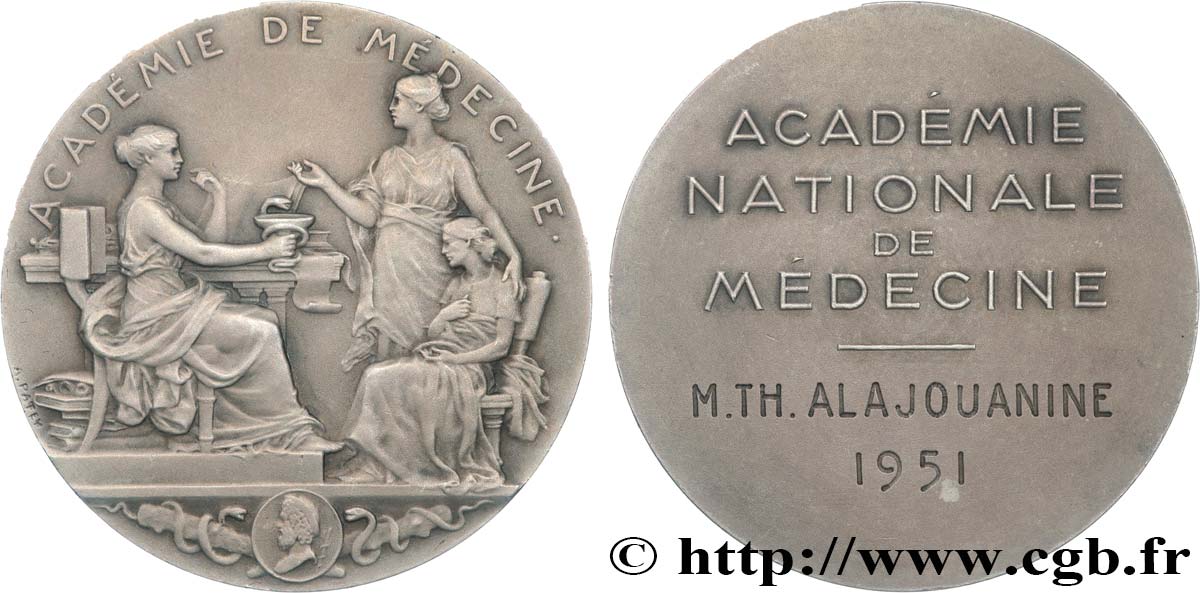
 Informar de un error
Informar de un error Imprimir la página
Imprimir la página Comparte mi selección
Comparte mi selección Haz una pregunta
Haz una pregunta Consignar / vender
Consignar / vender
 Descriptivo
Descriptivo



